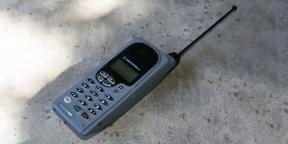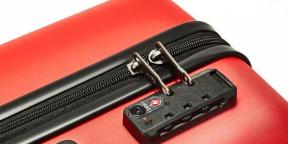How to turn any pan into a non-stick pan
Miscellaneous / / July 29, 2023
This trick of professional chefs is easy to repeat in any kitchen.
Why not immediately take non-stick cookware
Even the best non-stick pans deteriorate over time. They are most often made of aluminum or stainless steel and have a smooth, non-porous work surface. Due to exposure to high temperatures and the use of unsuitable (metal) blades, the protective coating is gradually destroyed and peeled off. Experts advise change the non-stick pan when it starts to happen, or every 3-5 years.
In addition, someone in principle does not use dishes with non-stick properties for fear that food can get into harmful substances. And someone just does not want to buy extra utensils.
How to make any pan non-stick
For this you will need a roll of parchment paper. Cut off a suitable size piece from it. Then put the dishes on medium heat and brush with oil. Place the parchment in the pan, wait a bit and turn over so that both sides of the paper are saturated with oil. At the end, lay out the products on parchment and cook as usual.
The maximum temperature at which use parchment, is 220-230 ° C. This is enough to, for example, cook scrambled eggs or fry the fish, as in this video:
Just make sure the paper is flat and smooth. creases spoil the non-stick coating you want to create.
Why does this method work
Parchment paper traditionally used for baking covered thin layer of silicone. He is responsible for its heat resistance and non-stick properties.
Silicone was first presented to the general public in 1943 and was originally used for aircraft. But due to its versatility and resistance to extreme temperatures, it quickly became in demand in a variety of industries. So he ended up in the kitchen.
The parchment-in-a-pan trick was at first used only by professional chefs who passed this knowledge from mouth to mouth. For example, chef Alexander Viriot first heard about it in 2011, when in a St. Petersburg hotel cooked for the award-winning French chef Alain Ducasse: “I tried to fry the fish on the planch, but it stuck. A corporate chef who passed by suggested buttering the plancha, placing a piece of parchment on top of it, brushing it with butter, and then placing the fish on top of it. And it worked."
American chef and cookbook author James Kenji Lopez-Alt tested the method on a variety of dishes, from Japanese fried dumplings gyoza and potato pancakes (successful) to pancakes (not very successful), and generally approved of it.
Today, thanks to cooking TV shows and viral videos on social networks, this simple technique is known not only by professionals, but also by amateurs. The main convenience of parchment is that it is suitable for cooking any dishes in dishes of any size. It is easy to cook sticky, brittle and quickly burning foods on paper - you just need to cut off the unnecessary from it.
Read also🧐
- Which way to wrap the foil when baking
- How to clean a frying pan
- Life hack: why wrap a grater in cellophane. An easy way to fix a known issue



